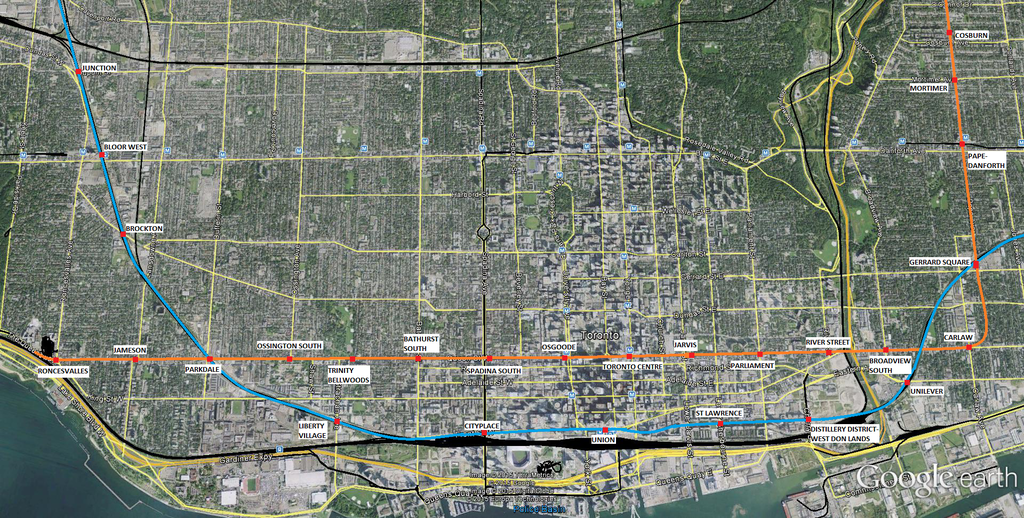MisterF
Senior Member
Queen Street already has transit? Surely you're not talking about the streetcar. By that definition every square inch of the city already has transit and we don't need to build any more subways anywhere. The whole point is that surface transit on the DRL route isn't getting the job done. The central portion of the Queen streetcar could be removed after the subway opens, like the Yonge and Bloor streetcars before it.I think at this stage what's on the site is just going to confirm what everyone thought to begin with. I read the same maps and came away still thinking Pape/Wellington was the best alignment. You can't go along Queen "with a connection to Unilever" in any practical way - it's a third of a mile away.
I still think an alignment further south has more advantages. The big increases in density are along and south of Front. That band has little in the way of east/west local transit, and RER is not going to do it much good. Queen already has transit - putting the subway there means you have two lines in a low-rise zone and none in a high-rise zone, or you get rid of the streetcars, and then have to build more subway stations, which will put pressure on to tear down the old fabric all along the street.
A southern subway line would leave the existing lines in place and add a subway linking Gerrard Square, Unilever, West Don Lands, Distillery, St. Lawrence Market, the financial core, new developments south of Front, the convention centre zone, City Place, Liberty Village, and the Exhibition.
All of the neighbourhoods you listed will be well served by RER. They aren't in the dire transit situation that neighbourhoods farther north are. If you're concerned about having two lines next to each other, a subway and an RER line is a far bigger duplication than a subway and a streetcar.
I'm not saying that the King route doesn't make sense, just not for the reasons you mention.






